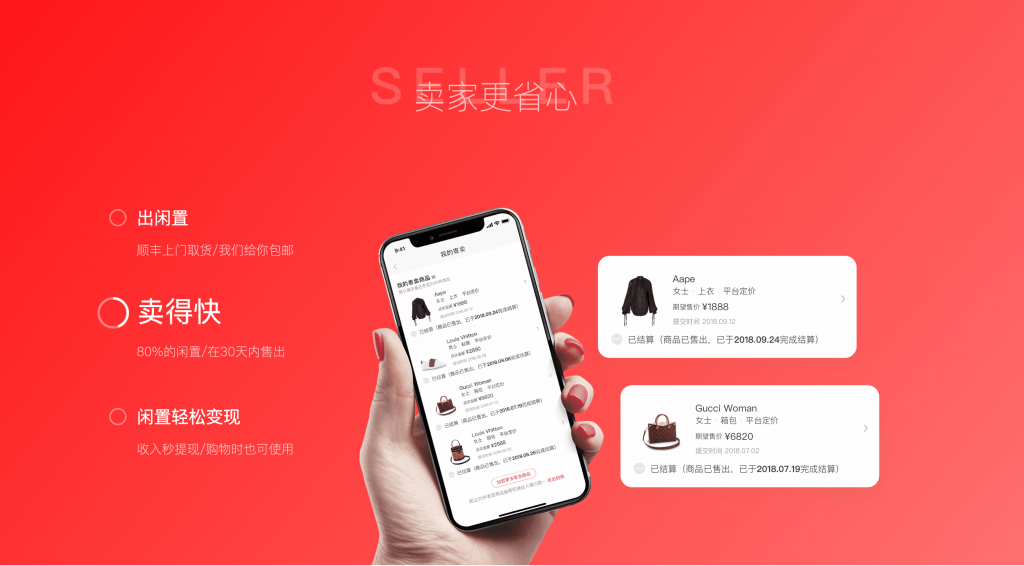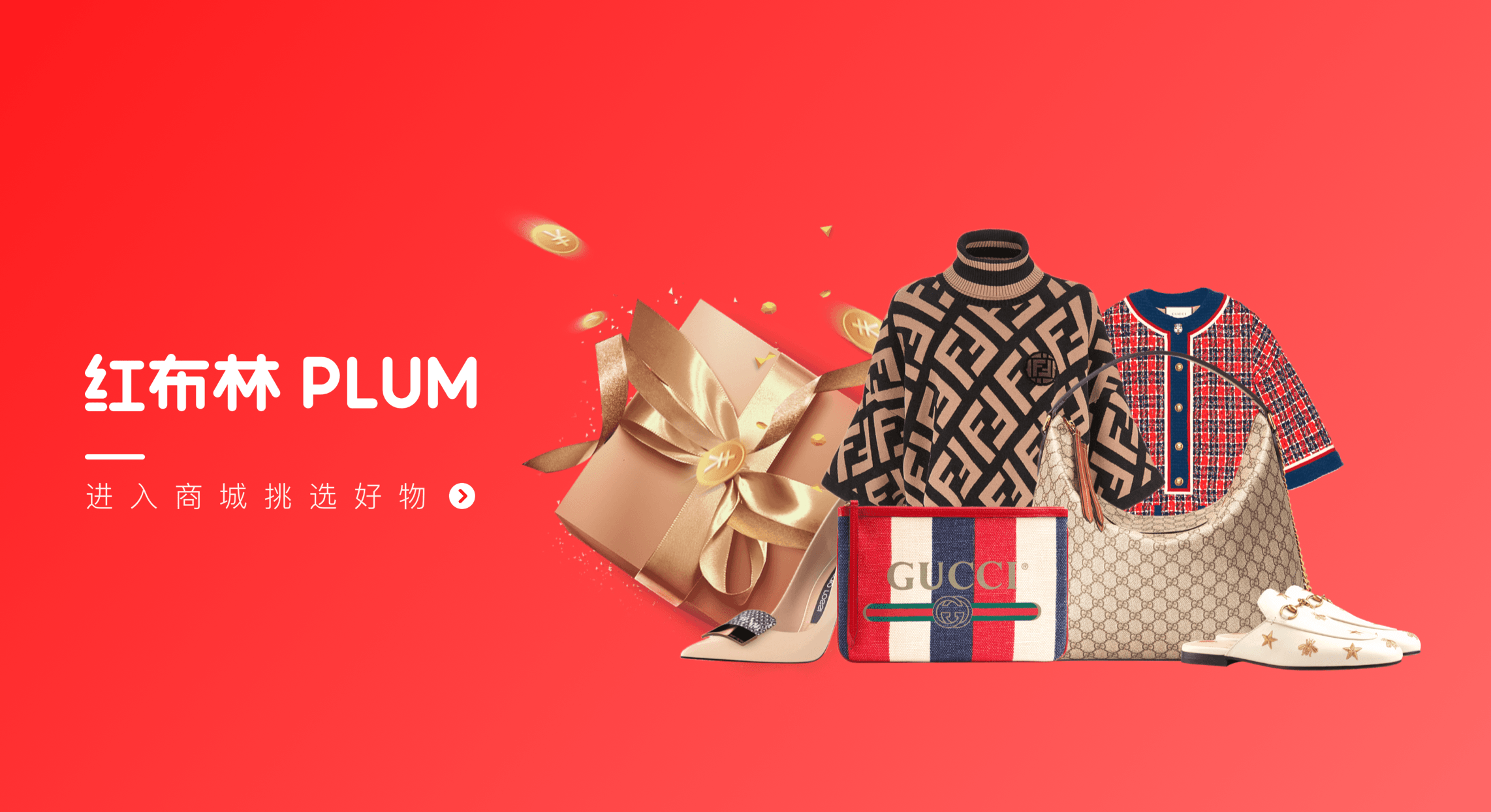While leading Chinese social media platforms like Weibo, Little Red Book, and WeChat are key to connecting with Chinese consumers, Western brands would be wise to keep abreast of any new digital platforms if they want to retain a competitive edge in China’s ever-changing consumer landscape. Our series, App Watch, examines rising applications and digital platforms relevant to the fashion, beauty, and general luxury space in China.
Beijing-based startup Plum, a second-hand luxury resale app, achieved its Series B round financing this August, collecting 20 million from a group of VCs that includes Matrix Partners China and Qiming Ventures. Featuring a similar consignment and resale model to the U.S.-based luxury reseller The RealReal, Plum is one of the few Chinese resale e-commerce sites specializing in luxury apparel and accessories.
Founded in 2017, the platform has made a big effort to educate China’s consumers about the secondary luxury market. In September, the tech company re-introduced itself to the Chinese market with a new Chinese name, “Hong Bu Lin” (红布林), and upgraded services. The re-debut of Plum is also reminiscent of The RealReal’s, which raised 300 million in its US IPO. And, while Plum’s 20 million Series B funding might seem minimal compared to The RealReal’s 300 million IPO, market conditions in China suggest that Plum could now be on a similar trajectory to the one the breakout U.S. company took. With the rapid economic development of China through its expanding middle class, the second-hand luxury category, which has been undervalued years, is starting to look promising.
Having raised a total of 58.4 million in six rounds of funding, Plum has seen steady growth, as investors continue to bet on the platform. But some voices are skeptical about the scale and profitability of the luxury resale business in China, while also finding some of the platform’s procedures to be problematic. With challenges coming from both inside and outside the business, will Plum be able to step up and take the title of China’s version of The RealReal?
In China, consumer sentiment towards second-hand retail is shifting. While older generations attach a stigma to second-hand goods, younger generations are significantly more open to them. Meanwhile, an abundance of luxury goods located in the country is setting the stage for a prosperous second-hand market. For generations of Chinese, second-hand goods are associated with poverty and poor quality, particularly for Gen Xers and older millennials who have experienced the socioeconomic transition. However, younger millennials and Gen Zers who grew up in a relatively affluent environment weren’t born with this stigma.

But the success of second-hand sales in China is not only limited by stigma; it also has underdeveloped market regulations to blame. Chinese consumers are always worried about the authenticity of pre-owned luxury goods on the market, as counterfeit sellers are rampant in the country. Fortunately, the battle against counterfeits has seen progress thanks to efforts from stakeholders that include luxury companies, local e-commerce businesses, and the Chinese government. Alibaba, teaming up with Richemont and Chinese law enforcement, is proving the country’s determination to protecting intellectual property.
Though China is one of the biggest luxury markets in the world, the secondary luxury market is underdeveloped, only making up 2 percent of the overall luxury market in 2018. There is substantial room for growth in China’s market compared to the U.S. and Japan, which claim 31 percent and 28 percent, respectively. In 2018, pre-owned, high-end goods amounted to 1.7 billion (12.1 billion RMB) in China, according to the 2019 Chinese Second-hand Luxury Industry Report. It is still a modest number compared to the 6 billion US resale luxury market from 2018, but based on the fact that the yearly growth rate exceeded 20 percent over the last four years, the report anticipates an upgrading trend will continue.
The growing acceptance of pre-owned goods and a more regular secondary market in China has prepared the country for Plum, but it’s not enough to build up a mature trading chain without having the capability to speak to the domestic market. To make up for the supply deficiency during its initial stages, Plum is selling popular vintage bags and jewelry from luxury brands like Chanel and Dior via collaborations with Japanese vintage retailers. The supply from Japan not only enriches the inventory but also establishes the authenticity of merchandise on site. As Plum attracts many well-traveled Chinese consumers who are big fans of vintage luxury and frequent visitors to Japanese vintage stores, the platform should build up its reputation among experienced vintage shoppers. But for consumers who are new to the secondary market, the conditions and details of pre-owned items are their main concerns. Plum has thus incorporated a livestreaming feature as an efficient and powerful way to showcase items remotely. Consumers can interact with livestreaming hosts, ask for a detailed presentation, and even purchase the item while watching the livestream.
It’s the right time to break into the market, but the most critical issue awaiting Plum is how to drive sustainable circulation. Featuring a very similar consumer to business to consumer (C2B2C) model as The RealReal, Plum is positioned as an intermediate platform that connects consumers who exchange goods. Both sites aim at authenticating merchandise they receive from consignors while handling all sales processes, including photography, cataloging, pricing, stocking, and returns. They earn a certain percentage of consignors’ commission fees for sustaining this operation.
While the RealReal’s commission structure consists of tiered commission rates based on the values of the items and their consignor loyalty program, Plum charges a 20 percent commission rate for all items across the board. The RealReal also only accepts luxury brands, but unlike Plum, offers consignors higher commission rates for higher-price items. By contrast, Plum’s one-rate-fits-all policy is less compelling in motivating high-value merchandise consignments such as watches, jewelry, and high-priced handbags. Meanwhile, The RealReal delivers the message that “the more you consign the more you earn” to clients through its VIP program. Though Plum features a privileged membership that offers extra discounts for shopping, the program cannot organically increase customer stickiness and has nothing to do with the supply side, which is the most important driver of the resale business.
Plum must furnish clients with satisfying consignment experiences. Plum’s one-option shipping fails to bring consignors an exclusive experience that is consistent with its high-end positioning. Consumers complain about the opaque evaluating process of Plum on social media and contend that “it’s a friendly pre-owned luxury shopping destination, but not really a fair place for trade-in.”
Given the positive future of the second-hand economy in China, there will be several competitors and partners who would like to earn a slice of that market share. Players who are interested in the lucrative market should collaboratively facilitate a transparent system that can earn clients’ trust and educate the public about sustainable shopping the way The RealReal calculates and discloses how much the consumer can save by reselling. Undoubtedly, Chinese luxury consumers are ready for the secondary market, but the shopping and consigning experiences they expect are as high-end as the new goods they are used to purchasing. Investors should be careful about the current gap between consumers’ expectations and the products/services that luxury recommerce sites provide. The question also needs to be asked if there are enough consignors and customers for this emerging secondhand market to take root in China. Time will tell.


